Abstract
The total marine fisheries production statistics for Japanese aquaculture, squid, and squid fisheries, are extremely important economic indicators. Data for 2022 shows total production at 59.3kt, the highest figure, reflecting historical trends. Data to date shows that Japan’s aquaculture industry has achieved sustainable growth, but at the same time, increased production has led to increased awareness of the environmental impact and the importance of resource management. The fishing industry for squids, including Japanese giant squid and red squid, is also attracting attention due to its impact on the marine ecosystem and changes in demand. These fisheries occupy an important position in Japan’s fishing industry, and improvements in production volume and quality contribute to the development of the industry as a whole. However, there are concerns about overfishing and the strain it places on the environment, and there is an increasing demand for sustainable fishing practices. In the future, it is expected that Japan’s aquaculture industry will continue to grow sustainably through technological innovation and strengthened resource management.
Total squid production
Since peaking at 774 kt in 1968, Japan’s marine fisheries production has significantly declined to 7.67% of its former high. This drop reflects a broader trend of reduced catches due to overfishing, stricter regulations, and environmental changes. The industry has faced challenges from depleted stocks and shifting marine ecosystems. Despite advances in sustainable practices, total production has struggled to recover, highlighting the ongoing need for effective management and conservation strategies to address these challenges and support the long-term health of marine resources.
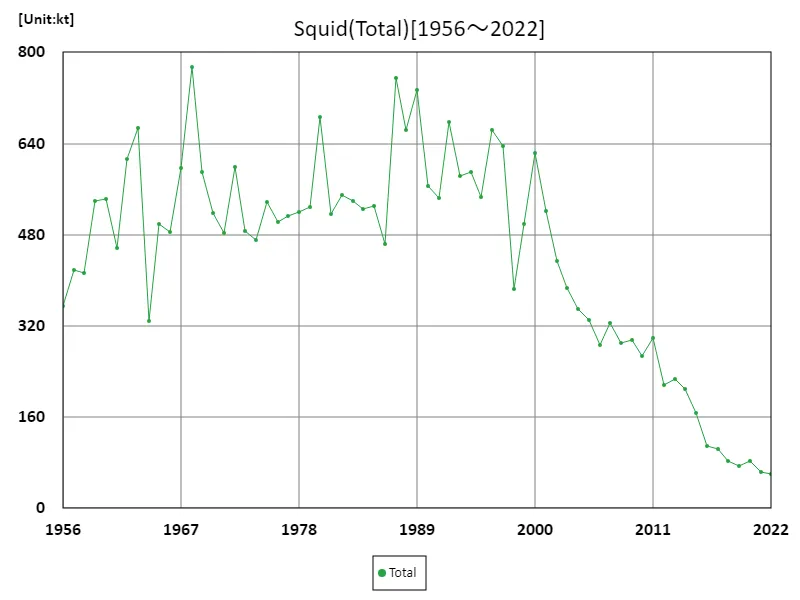

The maximum is 774kt[1968] of Total, and the current value is about 7.67%
Production of squid
From 1956 to 2006, Japan’s squid fisheries peaked at 23.7 kt in 1962. Since then, squid production has declined to 29.8% of this peak. This trend reflects reduced squid stocks, likely due to overfishing and environmental changes. The decline has prompted increased focus on sustainable fishing practices and stock management. Despite these efforts, production remains below historical highs, underscoring the need for continued conservation efforts to ensure the long-term viability of squid populations and the health of marine ecosystems.
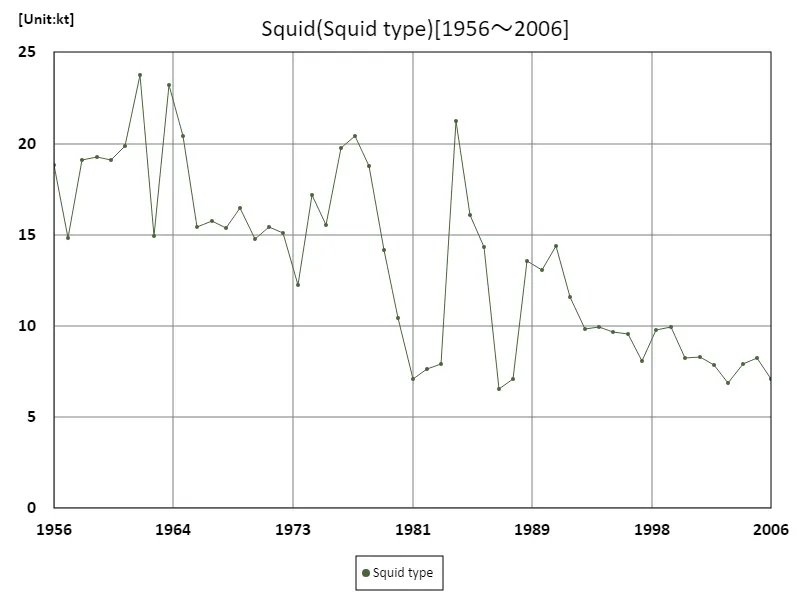

The maximum is 23.7kt[1962] of Squid type, and the current value is about 29.8%
Dried squid production
In 1956, Japan’s dried squid production reached a peak of 668 kt, marking a high-water mark for the industry. Since then, production trends have fluctuated, reflecting changes in fishing practices, market demand, and environmental factors. The consistency in the 1956 data highlights a significant historical benchmark, but modern figures show reduced totals compared to this peak. The decline emphasizes the need for ongoing adjustments in fishing strategies and conservation efforts to address both ecological impacts and market shifts, ensuring sustainable squid production moving forward.
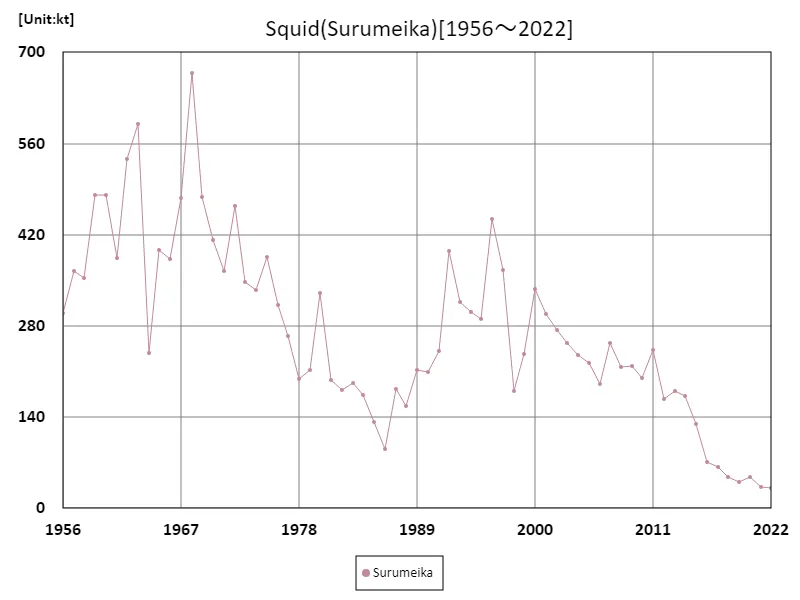

The maximum is 668kt[1968] of Surumeika, and the current value is about 4.59%
Red squid production
Since its peak of 185 kt in 1987, red squid production in Japan has drastically declined to just 1.93% of this high. This significant drop reflects challenges such as overfishing, habitat degradation, and changes in marine conditions. The current low levels highlight the urgent need for enhanced management practices and conservation measures. While past data underscores the importance of red squid in Japanese fisheries, the ongoing decline calls for a strategic approach to support recovery and sustainability in both fishing and aquaculture sectors.
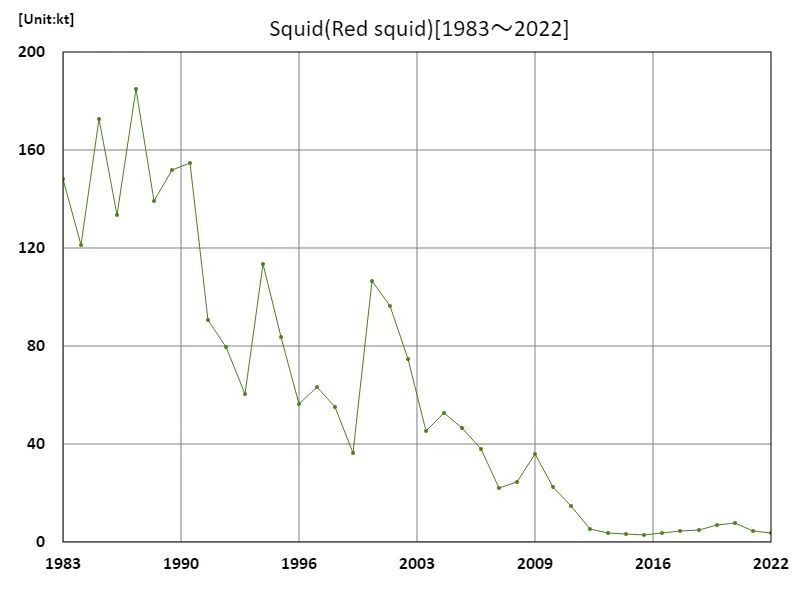

The maximum is 185kt[1987] of Red squid, and the current value is about 1.93%
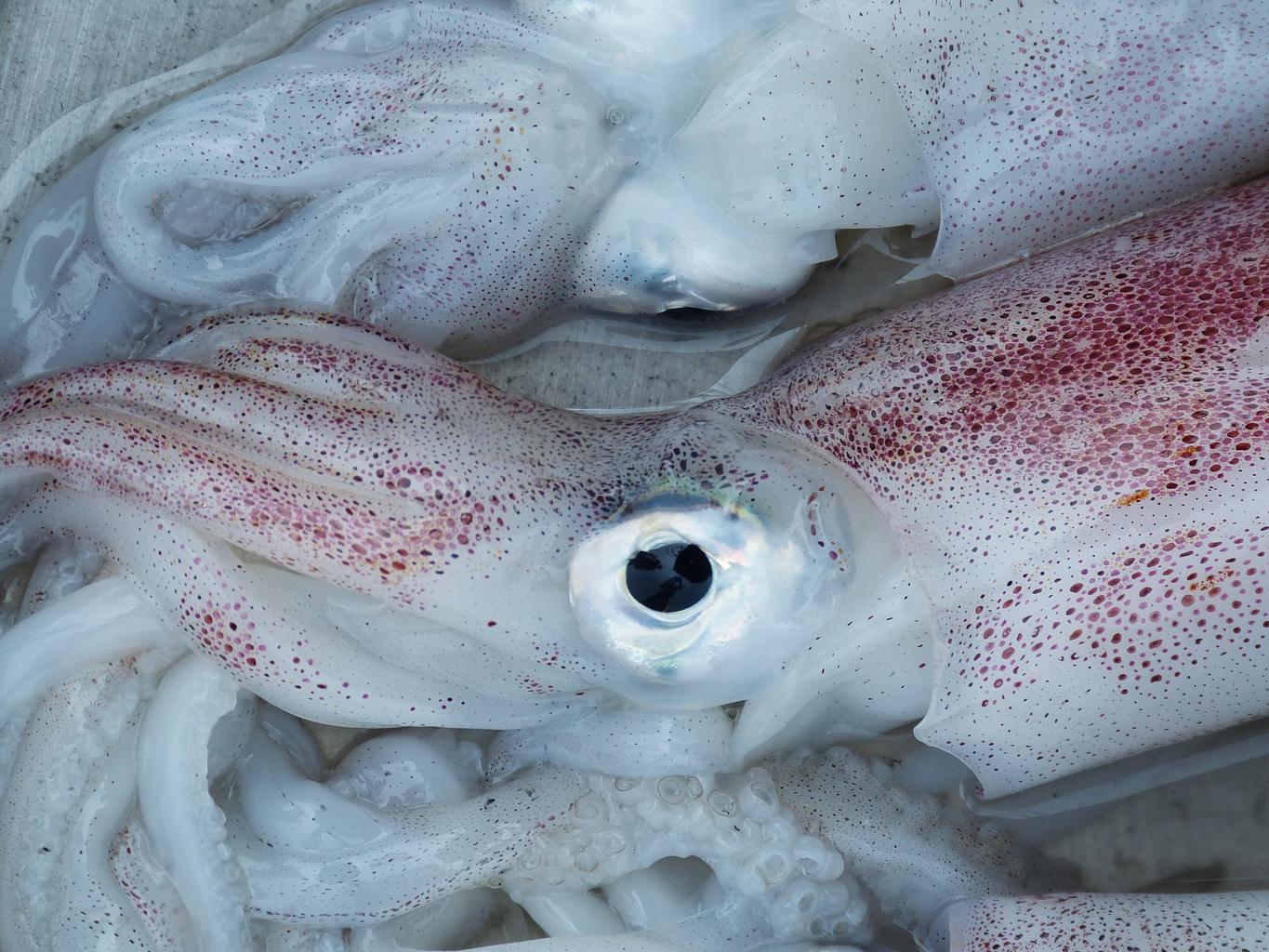


Comments